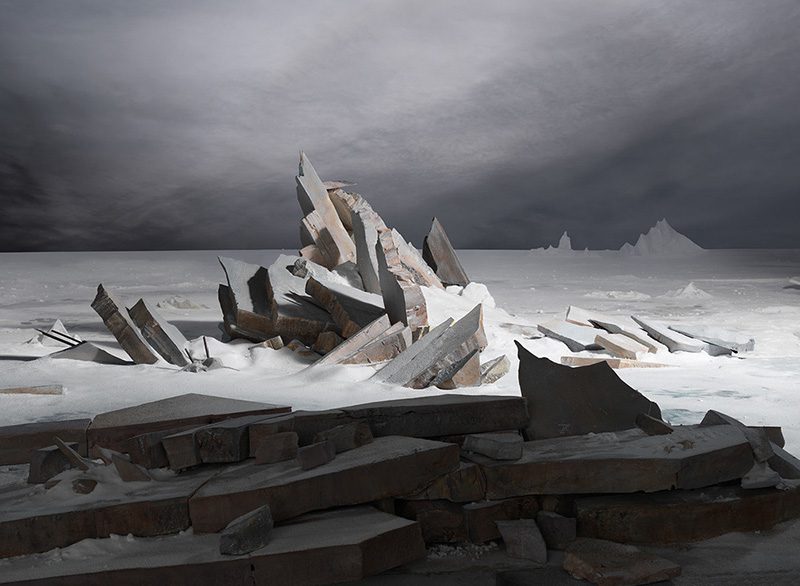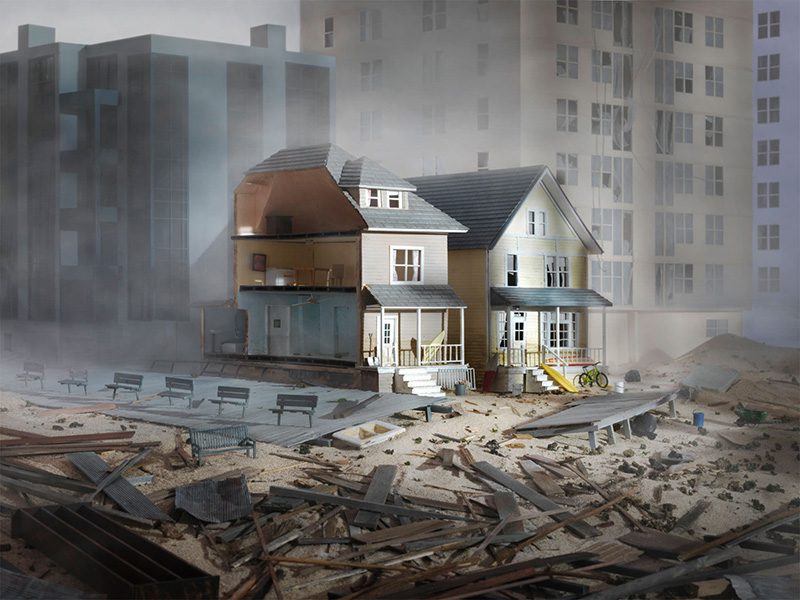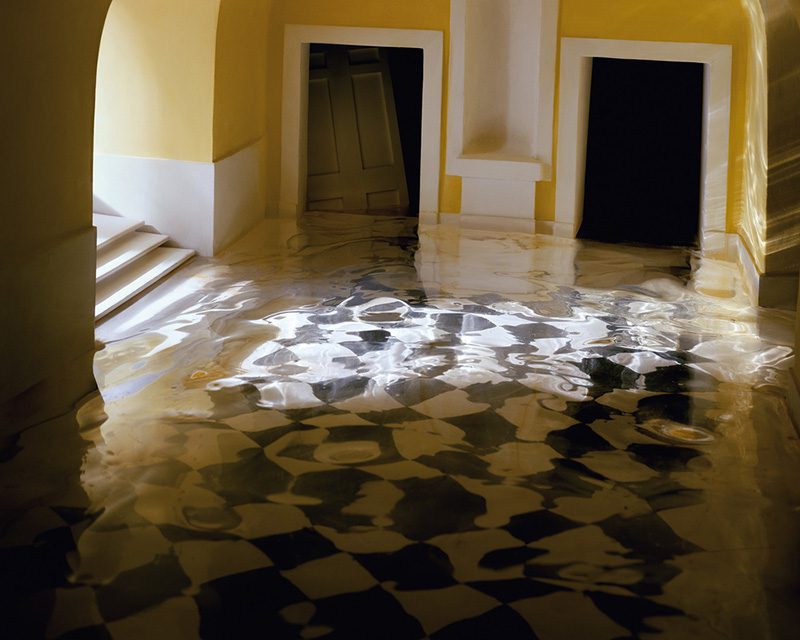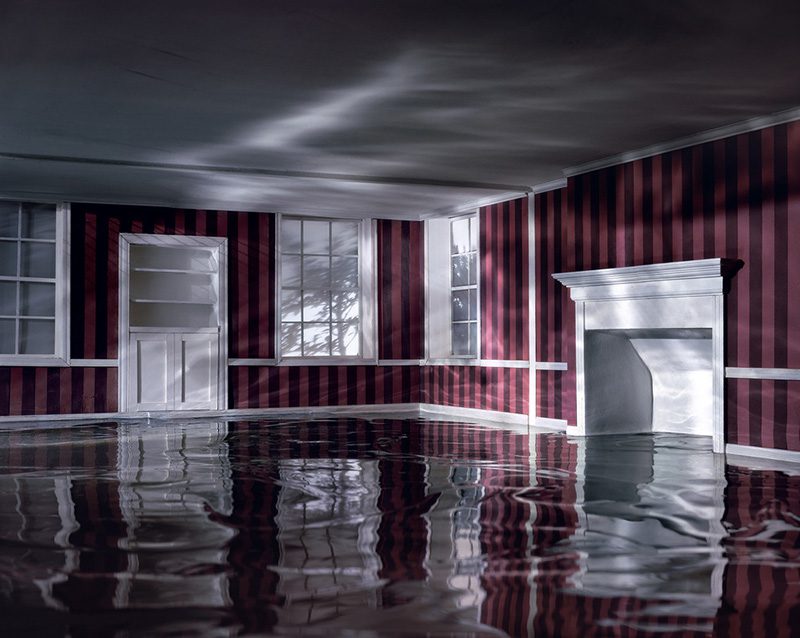ART-PRESENTATION: James Casebere-Fugitive
 James Casebere belongs to a generation of artists who have questioned the veracity of images from the beginning and for whom a photograph is something other than a document. His detailed images depict architectural models made by the artist using materials such as polystyrene, paper and plaster. The models are clearly models, they do not conceal their construction.
James Casebere belongs to a generation of artists who have questioned the veracity of images from the beginning and for whom a photograph is something other than a document. His detailed images depict architectural models made by the artist using materials such as polystyrene, paper and plaster. The models are clearly models, they do not conceal their construction.
By Dimitris Lempesis
Photo Haus der Kunst Archive
James Casebere has been photographing dioramic constructions of human civilization since 1975. His scenes from places both fictional and real, respond to current events. Over the years, Casebere’s images have expanded and redefined to show his exploration of aesthetic technical challenges. “Photography resonates with me because it manipulates our perception of the world around us”, he says. “I am interested in photography as a means of persuasion, of propaganda and constructing histories. I am interested in how photography creates and reconstructs reality”. Casebere’s images do not refer to stable, existing objects. Rather, compressed in them is a system of political and associative references, even to things such as volatile memories or dreams. “I am trying to create something that embodies or dramatizes the kind of psychic space that exaggerates certain ideas and experiences”, is how Casebere describes his pictorial method, a strategy in which the models exemplify what might be characterized as the architectural unconscious of a given spatial system. Casebere’s early representations questioned the established codes of the American Midwestern middle-class value system. A well-known work from this period is “Fork in the Refrigerator” (1975), the photograph of a refrigerator penetrated by an oversized fork. Flooded and desolate spaces, whether illuminated or dark, are recurring illusionistic motifs in series of works from the late ‘90s and early ‘00s. The artist came up with the idea of flooding rooms with water on a trip to Berlin, shortly after the fall of the Berlin Wall in 1989. Casebere studied the neglected parts of the city with particular attention, including the sewage system and the metro stations linking West and East Berlin. With 70 works produced in a variety of formats and techniques, the exhibition “Fugitive”, covers all periods of Casebere’s career: large single and multi-part colour photographs, black and white silver gelatin prints, dye destruction prints, and waterless lithographs. For the first time, the artist presents working models and sketchbooks, source materials, as well as an extensive selection of previously unseen Polaroid studies, thereby revealing the development process of selected works, from the various production stages to the finished frame. For the exhibition the artist has created site-specific works for the large staircase of the exhibition space: four friezes that refer to Haus der Kunst’s complex political history as a representational National Socialist structure. The new works, which also explore the ceremonial system of the Albert Speer-designed Zeppelin Field in Nuremberg, are thus part of the continuing confrontation with historically burdened architecture.
Info: Haus der Kunst, Prinzregentenstraße 1, Munich, Duration: 12/2-12/6-16, Days & Hours: Mon-Wed & Fri-Sun 10:00-20:00, Thu 10:00-22:00, www.hausderkunst.de




